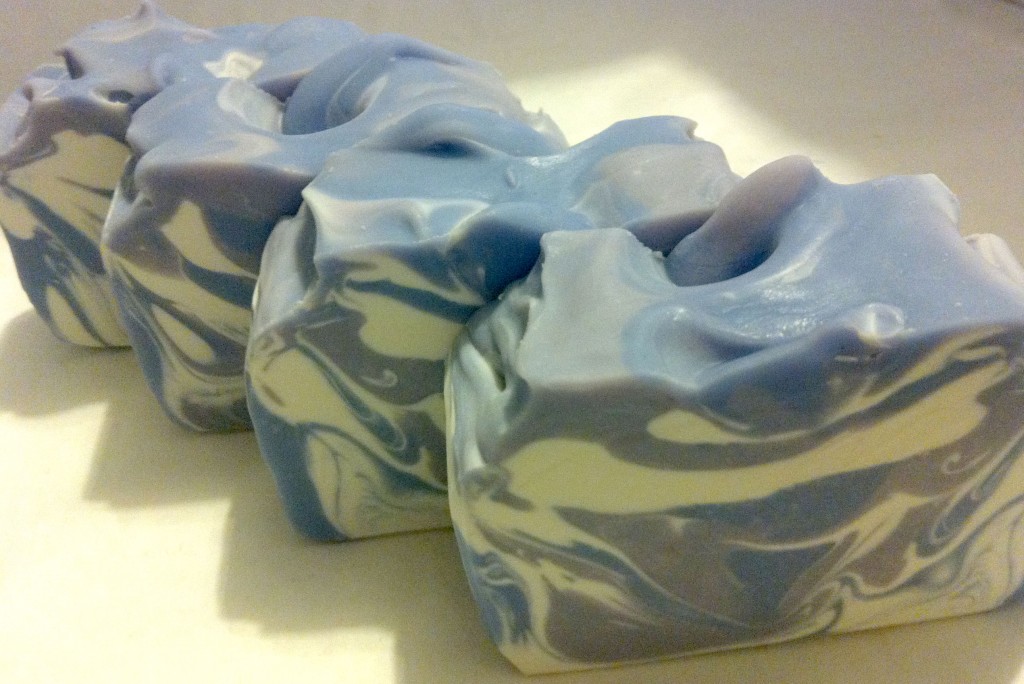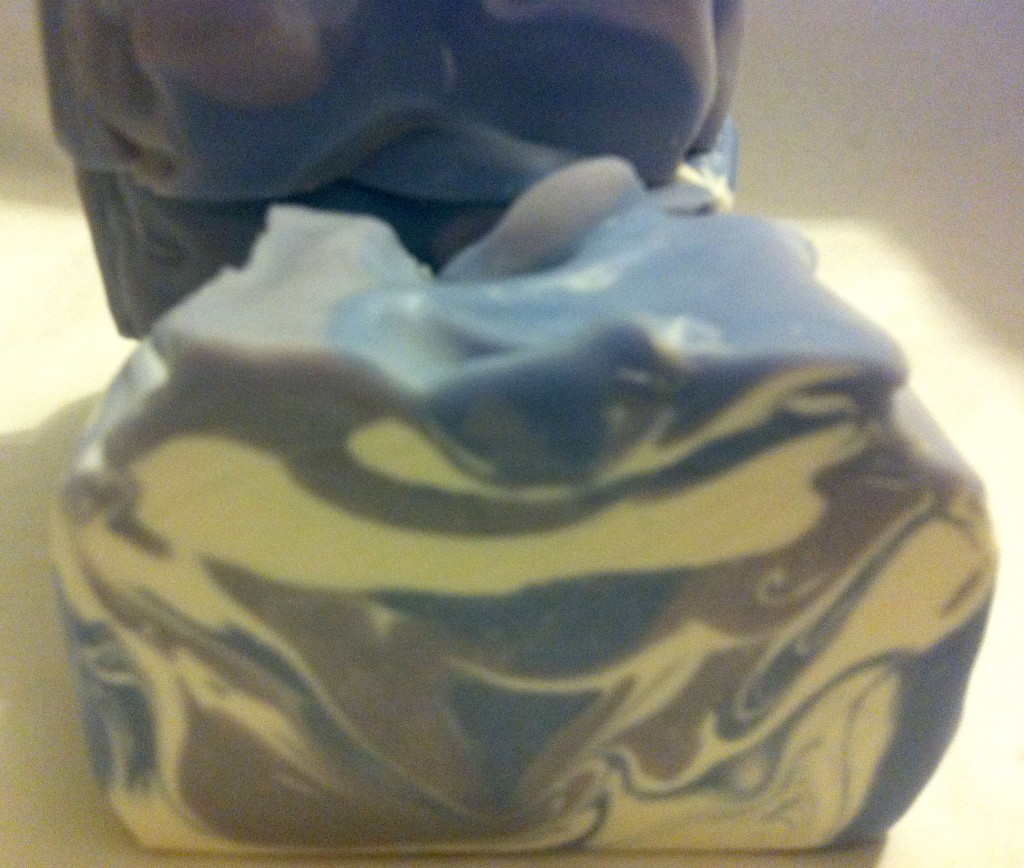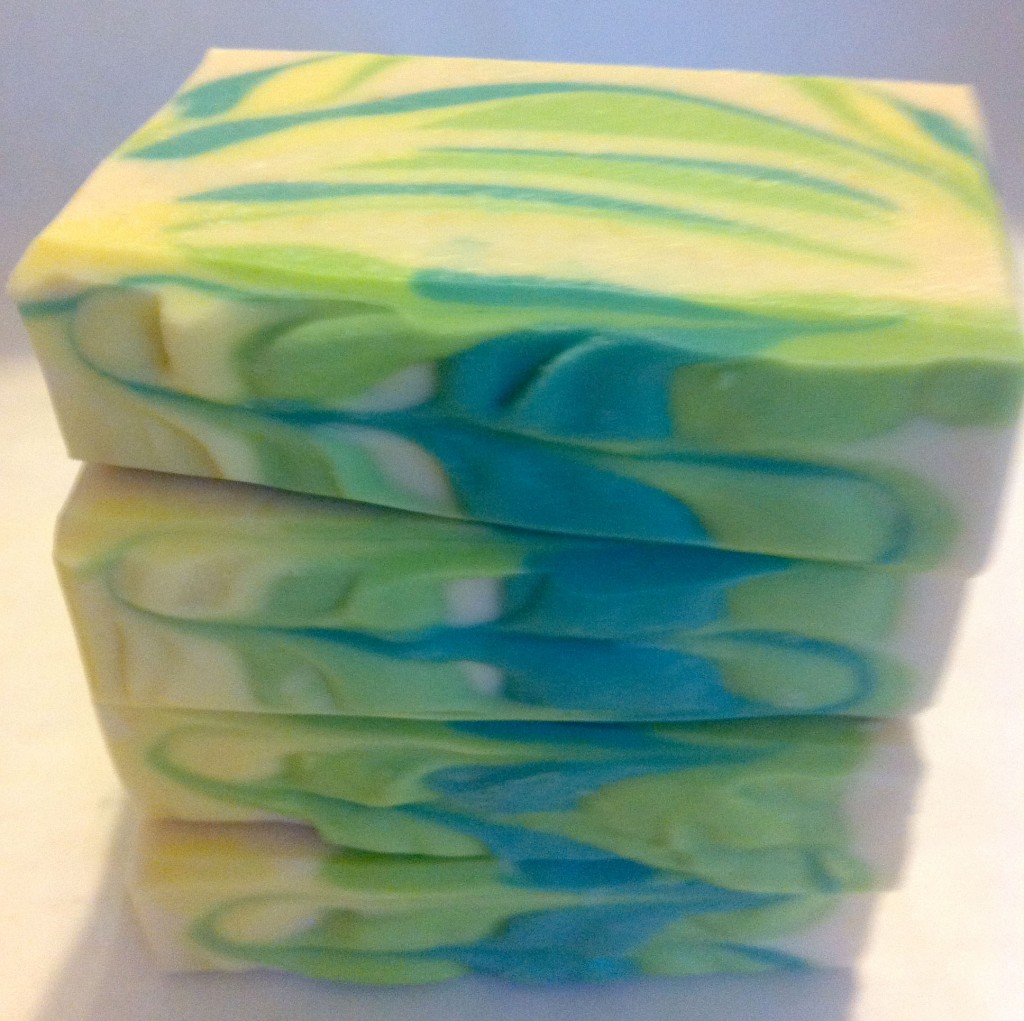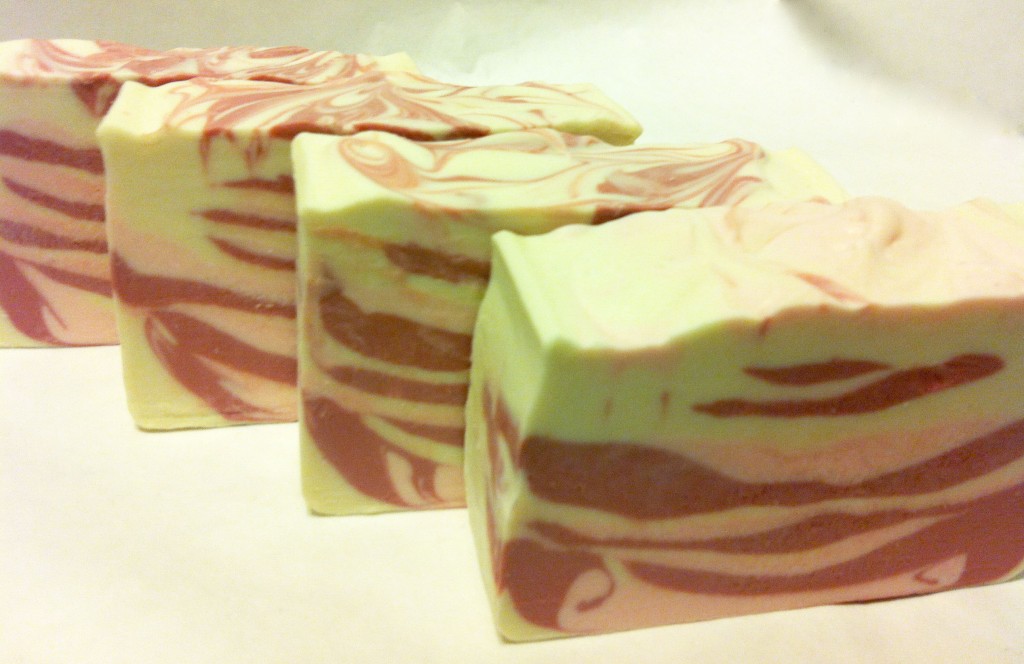
I had a lot of fun making this new soap.
The fragrance evokes tender beach floras, lightly misted with the refreshing scent of ocean air, ripe succulent summer melon, and the subtle familiar scent of suntan lotion.
The soap is loaded with tropical butters and oils, including mango and cocoa butters and olive, coconut, palm, avocado, and castor oils. There is also a kiss of silk and smooth kaolin clay.
It smells heavenly. I keep picking it up and touching and smelling it. It should be in the Etsy store in the middle of April. Let me know if you want to reserve a bar now, and I will set it aside for you.

















